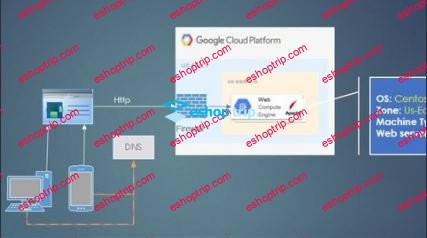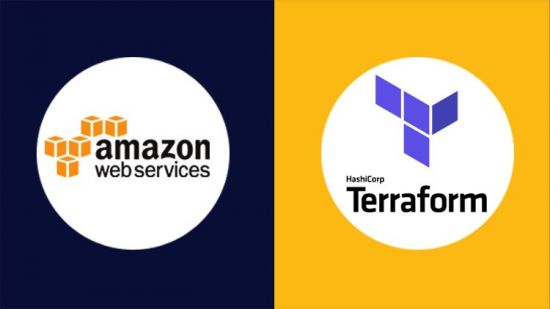Language: English | VTT | Size: 5.60 GB | Duration: 94 lectures (09:03:16)
Understand TCP graphs and why they look like they are !
What you’ll learn
Difference between Connection-Oriented and Connection-less state
Difference between Byte oriented and datagram oriented protocols
TCP Internal functionality and Mechanism
Understand how TCP is designed and why
TCP congestion control, Flow control and Window Mechanism
Various other complexties of TCP protocol explained in a simplest possible way
Assignments and Questions to practice TCP concepts
Requirements
Basic knowledge of Transport Layer – UDP and TCP is required
Basic knowledge of Network Layer of OSI model is a plus
Description
This is Master Class course on TCP/IP protocol – Transmission Control Protocol. Since it is Master Class course, this course discusses the internal design and functioning of complex transport layer protocol – TCP.
Almost all traffic on internet today is transported by TCP protocol. TCP, as where it stands today, mature and solid, is the result of over 25 yrs of research by network gurus. TCP is complicated and difficult to understand, therefore i have paid utmost attention to present the concept in most simplest way as possible without any loss of information.
In this course, we unwrap internals of TCP and try to understand how it works and why it is so designed. So, be ready and place yourself in first gear !
TCP is difficult to understand and confusing if not done in the right way. In this course, I shall be covering all aspects of TCP internal functioning STEP BY STEP with beautiful diagrams, Assignments, Questions and exercises. At no point you shall be left with doubts is my promise. There is no programming in this course.
This is a little Advanced Course, if you are absolute bner in networking, I would recommend you to first enroll in my other course “Networking course – Network Concepts and Programming from Scratch” and cover important sections on L2 routing, L3 routing, and Transport Layer at-least before jumping into this course. If you are already familiar with this much networking basics, then you are all set to sail through this course.
Table Of Contents:
Section 1 : Basics
1. Agenda of the course
2. General overview of OSI model and TCP/IP stack
3. TCP IP Stack layer functions
4. Transport Layer Goals
5. User Datagram Protocol (UDP)
6. Transmission Control Protocol (TCP)
7. UDP Vs TCP
8. Summary
Section 2 : TCP Preliminaries
1. TCP Vs Other Protocols
2. TCP ARQ Challanges
3. TCP Byte Circular Buffers
4. Snts and Sequence Numbers
5. TCP Snts Type
6. TCP Reliable Delivery
7. TCP Retransmission r Illustration
8. TCP together with IP Protocol
9. Summary
From here on we shall dive deep into specifics of TCP
Section 3 : TCP Connection Management
1. Who is Client and Who is Server ?
2. TCP – 4-tuples
3. TCP Connection Open – 3-way handshake Explained
4. TCP Connection Closing – 4-way handshake
5. Sequence Numbers Consumption Rules
6. TCP Connection out and Exponential Backoff
Section 4 : TCP out and Retransmission
1. TCP Retransmission
2. TCP RTO Problems if computed Wrongly
3. Expectations from TCP when Snt loss occurs
4. TCP Exponential backoff – When consecutive snt loss occurs
5. TCP RTO Value Estimation
6. TCP Retransmission Ambiguity Problem
7. Karn’s Algorithm
8. Karn’s Algorithm Illustration
9. Karns Algorithm Analysis
9. Concept of Fast Retransmission
10. TCP handling out of order snts
11. TCP holes Problem and its remedy
12. Redundant Retransmission due to dupACK
13. Fast Re-transmission Vs r based Re-transmissions
14. Selective Acknowledgement (SACKs)
15. SACKs Example
16. Cumulative Acknowledgement
Section 5 : TCP Data flow and Window Management
1. TCP Send and Recv Windows
2. TCP Send and Recv Window Layout
3. TCP Flow control
4. TCP Window Advertisement
5. Sliding Window Rules
6. Window Management Example
7. Data Accumulation – TCP Nagle Algorithm
9. TCP Window Size Resizing
10. TCP Zero Window
11. TCP Probe Snts
12. Problem of Silly Window Syndrome (SWS)
13. Silly Window Syndrome Solution (SWS – Solution)
14. SWS – Complete Example
Section 6 : TCP Congestion Control Procedures
1. TCP – Congestion Control Procedures
2. TCP – CCP Goals
3. TCP – 3 Parts of CCP
4. Introducing Congestion Window
5. Congestion Control Algorithms
a. Slow Start
b. Congestion Avoidance
6. Slow Start Algorithm
7. Slow Start Algorithm in Action
8. Slow Start Algorithm Summary and SSthrash
9. Congestion Avoidance Algorithm With Example
10. Congestion Control Algorithm Selection and Switching
11. Typical TCP Graph
12. Concept of Fast Recovery
13. Algorithm Selection Flowchart
Good Luck ! Hope you Enjoy the course.
Who this course is for:
Students, job seekers, professionals
those trying to switch into Networking Development Roles











Reviews
There are no reviews yet.